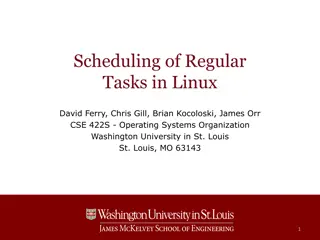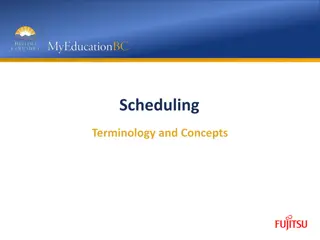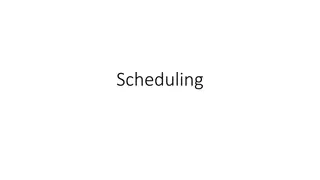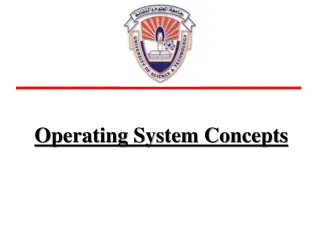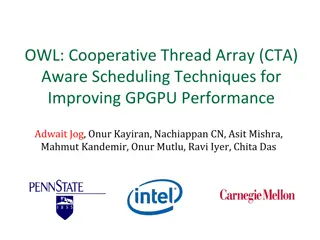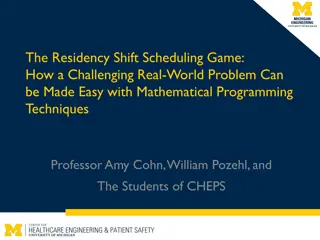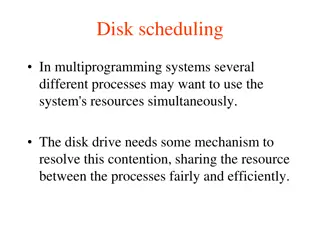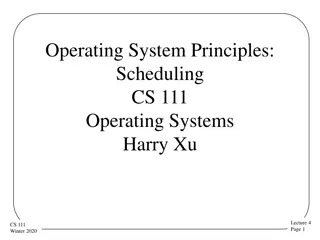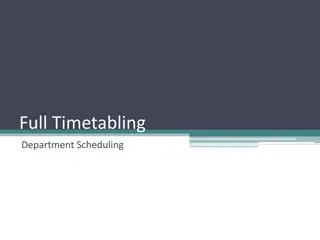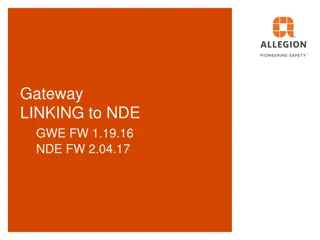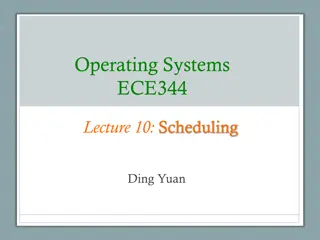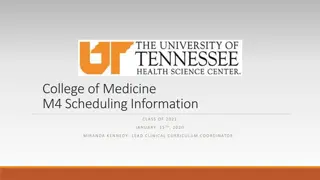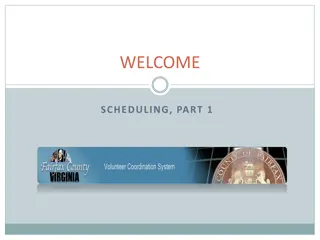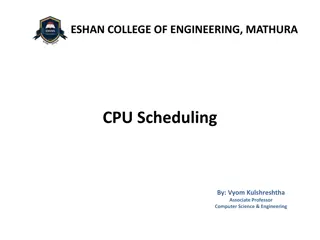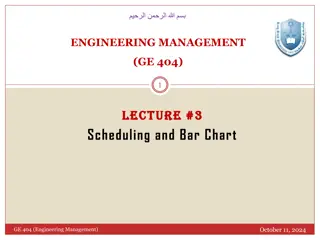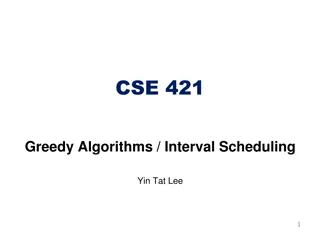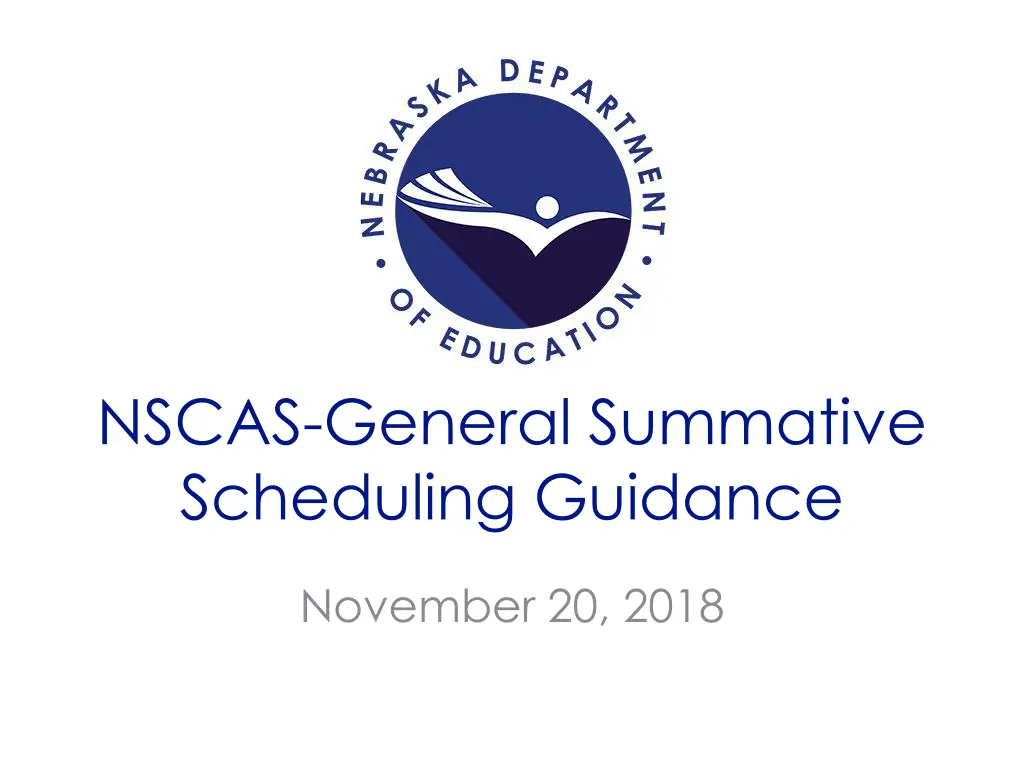
General Summative Scheduling Guidance
Get insightful recommendations and priorities for scheduling NSCAS assessments, emphasizing student needs over convenience. Educator involvement tips and session time recommendations provided.
Download Presentation

Please find below an Image/Link to download the presentation.
The content on the website is provided AS IS for your information and personal use only. It may not be sold, licensed, or shared on other websites without obtaining consent from the author. If you encounter any issues during the download, it is possible that the publisher has removed the file from their server.
You are allowed to download the files provided on this website for personal or commercial use, subject to the condition that they are used lawfully. All files are the property of their respective owners.
The content on the website is provided AS IS for your information and personal use only. It may not be sold, licensed, or shared on other websites without obtaining consent from the author.
E N D
Presentation Transcript
NSCAS-General Summative Scheduling Guidance November 20, 2018
Scheduling Guidance Agenda Scheduling Recommendation/Guidance Supporting Data Resources Questions
Scheduling Priorities Student needs and not adult convenience Ultimately students should have the time they need to demonstrate their knowledge and skill Must balance this with the importance of instructional time
Educator Involvement Prior to testing students can be informed about expectations about time We want you to do your best, but if you cannot figure out the answer you should use your best test taking strategies and make an educated guess. Last year most students finished in less than 90 minutes. The test is untimed, but the majority of students will not need more than 90 minutes.
Educator Involvement Educators should be careful about encouraging students to take as much time as they need Longer times do not always result in higher scores Actively engaged students will typically do better than students that are trying to take longer to please an adult Educators should be mindful of students that are not progressing through the assessment Stuck on an item due to over analysis or inability to find the right answer Wasting time to avoid returning to class
Educator Involvement Educators may not pace students (dictate the speed at which they engage with items) Students should be redirected and encouraged to focus if they are not engaged Please refocus on the test and make sure to do your best. Students may be encouraged to slow down and do their best if they are not engaged Slow down and make sure you are showing us what you know and can do.
Scheduling Recommendations For NSCAS Mathematics 90 minutes (plan for students that will need longer) Divided into 2 or 3 sessions For NSCAS ELA 120 minutes (plan for students that will need longer) Divided into 2 or 3 sessions For NSCAS Science 45 minutes (plan for students that will need longer) Single session for most students Districts can examine their own testing time data from 2018 (District Data File)
Table 1.1. NSCAS ELA Descriptive Statistics of Test Duration Grade N Mean SD Median Min. Max. 3 23,865 84.57 37.60 78.35 4.98 445.27 4 23,866 87.36 35.71 82.08 4.37 543.88 5 22,284 90.37 36.79 84.30 4.03 434.32 Test Duration 6 23,310 88.12 35.04 83.07 3.03 379.52 7 22,957 77.49 29.59 73.48 2.57 319.27 8 23,245 79.63 30.47 75.68 1.80 436.90
Scheduling Recommendations Districts should examine their own testing time data from 2018 (District Data File) Elapsed Time (Column AB 00:00:00 hour/minute/second) Encourage educators to talk with students prior to testing Students with times that suggest they did not give their best effort Students that took significantly longer than most other students
Scheduling Recommendations Vast majority of students should finish ELA & Mathematics in 2 hours or less Typically students that need more will either: Have a documented need (IEP, 504, or EL) History of lengthy test taking Districts may stop students at 3 hours unless Educators feel there is an educationally valid reason to continue and one of the following is true: The student is still actively engaged in testing The student has a documented need for extended time The student requests additional time
Scheduling Recommendations Educators should avoid practices that unduly prolong the test Frequent unneeded breaks that prevent students from finding a rhythm or cause a student to reread passages in ELA Putting undue emphasis on the test that causes student anxiety and the inability to move forward in the test Pacing student progress-proctors should not interfere unless it is clear a student is either Clicking through without effort Or stuck and not able to move forward Educators may encourage engagement, but may not require/punish student in any way
Scheduling Recommendations Breaks Due to adaptive nature, group breaks are no longer prohibitive But If schedules are devised wisely most students will not need a break in the middle of a session Should be used sparingly and only for long scheduled sessions, which are not recommended Should avoid interfering in the testing atmosphere Should be part of the established schedule
Description of Variables Variable Description Total testing time actively responding to items in minutes Scale Score Student ability estimated in Scale Score metric Test duration Gender Student gender Ethnicity Student ethnic group IEP Individual education plan Section 504 Section 504 services Limited English proficient, or English language learner (ELL) Active number of days test items LEP Number of days in which students actively answered
Average Test Duration Grade 3 4 5 6 7 8 ELA 84.62 87.41 90.41 88.18 77.55 79.73 Math 60.81 67.22 65.00 76.94 68.49 65.42 Science 38.23 37.14
ELA Test Duration ELA 70 60 50 Percentage 40 30 20 10 0 TDM <= 60 60 < TDM <= 120 120 < TDM <= 180 180 < TDM <= 240 240 < TDM <= 300 300 <TDM <= 360 360 < TDM Grade 3 Grade 4 Grade 5 Grade 6 Grade 7 Grade 8 TDM: Test Duration in Minutes Average number of minutes between 76 and 90 minutes by grade 83-91% of student within 120 minutes (2 hours) 98-99% of students within 180 minutes (3 hours)
Math: Distribution of Students Test Duration Math Test Duration Mathematics 70 60 50 Percentage 40 30 20 10 0 TDM <= 60 60 < TDM <= 120 120 < TDM <= 180 180 < TDM <= 240 240 < TDM <= 300 300 <TDM <= 360 360 < TDM Grade 3 Grade 4 Grade 5 Grade 6 Grade 7 Grade 8 TDM: Test Duration in Minutes Average number of minutes between 61 and 77 minutes by grade 92-99% of student within 120 minutes (2 hours) 99% of students within 180 minutes (3 hours)
Science Test Duration Science 100 90 80 70 Percentage 60 50 40 30 20 10 0 TDM <= 60 60 < TDM <= 120 120 < TDM <= 180 180 < TDM <= 240 240 < TDM <= 300 300 <TDM <= 360 360 < TDM Grade 5 Grade 8 TDM: Test Duration in Minute Average number of minutes between 37 and 38 minutes by grade 90-92% of student within 60 minutes 99% of students within 120 minutes
Subgroup Information ELA: IEP Average test duration was similar between students who did and did not have an IEP Students who were currently or formerly an English Language Learner (ELL) took longer to finish the assessment In Grade 3-6, students who received 7 passages had higher average test duration compared to 6 passages. However, average test duration was similar in Grade 7-8 between students who received 7 passages and less than 7 passages. LEP Number of Passages
Subgroup Information Math: IEP Average test duration was similar between students who did and did not have an IEP, except Grade 5-7. In Grade 5, students who received IEP had higher average test duration. In Grade 6-7, students who did not have an IEP had higher average test duration. Students who were currently or formerly an English Language Learner (ELL) took longer to finish the assessment LEP
Subgroup Information Science: IEP Students who have an IEP had higher average test duration Students who were currently or formerly an English Language Learner (ELL) took longer to finish the assessment LEP
Testing Sessions Information ELA: 96%-99% of students had 1-3 active number of days ELA 2590 2570 2550 Scale Scre 2530 2510 2490 2470 2450 1 2 3 Number of Active Days G3 G4 G5 G6 G7 G8
Testing Sessions Information Math: 98%-99% of students had 1-3 active number of days Math 1290 1270 1250 Scale Scre 1230 1210 1190 1170 1150 1 2 3 Number of Active Days G3 G4 G5 G6 G7 G8
Testing Sessions Information Science: 99% of students had 1-3 active number of days Science 110 105 100 Scale Score 95 90 85 80 Number of Active Days G5 G8
Additional Resources Provide PowerPoint and Recording Provide NSCAS General Scheduling Guidance NSCAS General Scheduling Guidance- Supporting Data NSCAS General Manuals will include scripts for subsequent sessions Suggested language for testing scenarios
Conclusion While these tests and the results are important, it is critical that we balance the need for students to demonstrate their knowledge and skills with time they could be in the classroom continuing to learn. NDE encourages districts to give students the time they need on NSCAS, but no more than they need. At some point a student spending more time on a test will not give us any better information.
Questions? Raise hand or type questions in chat

